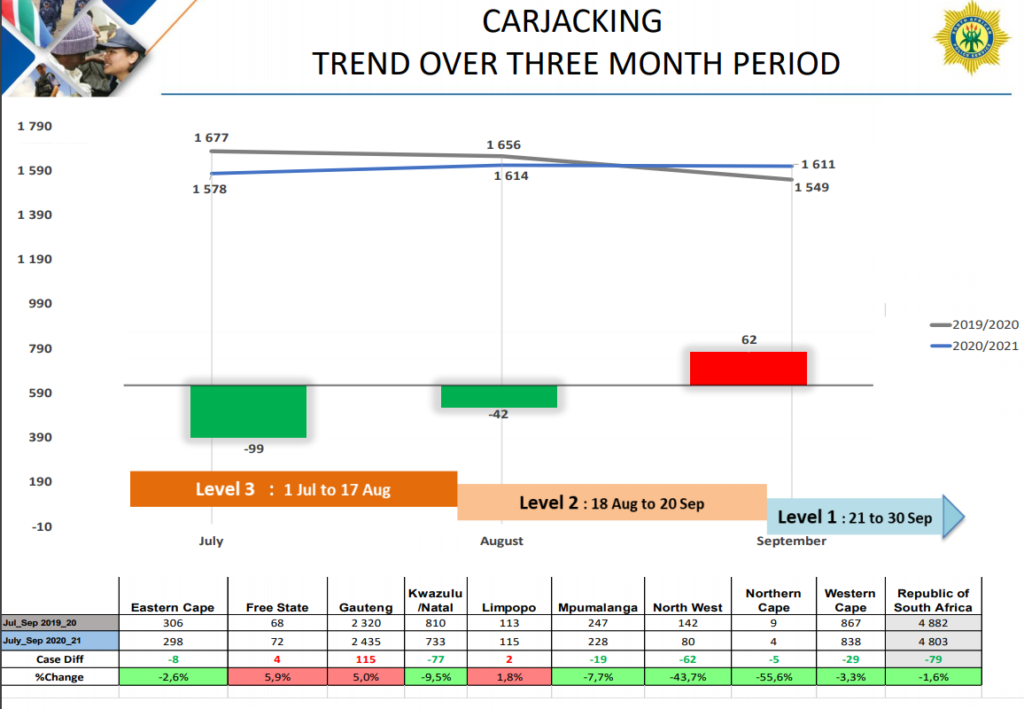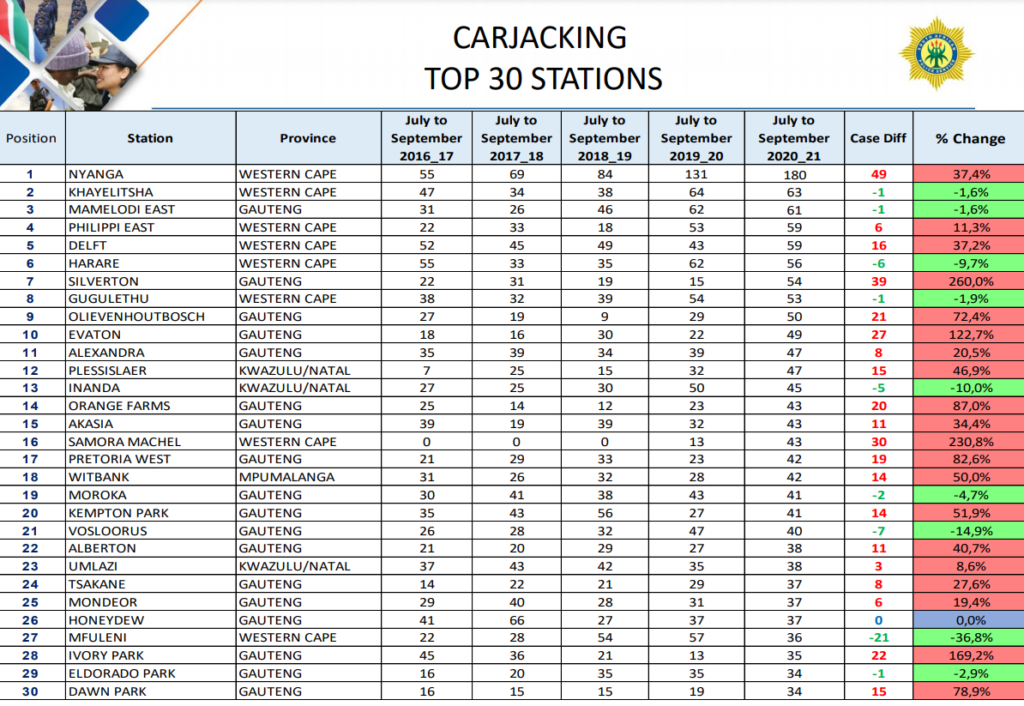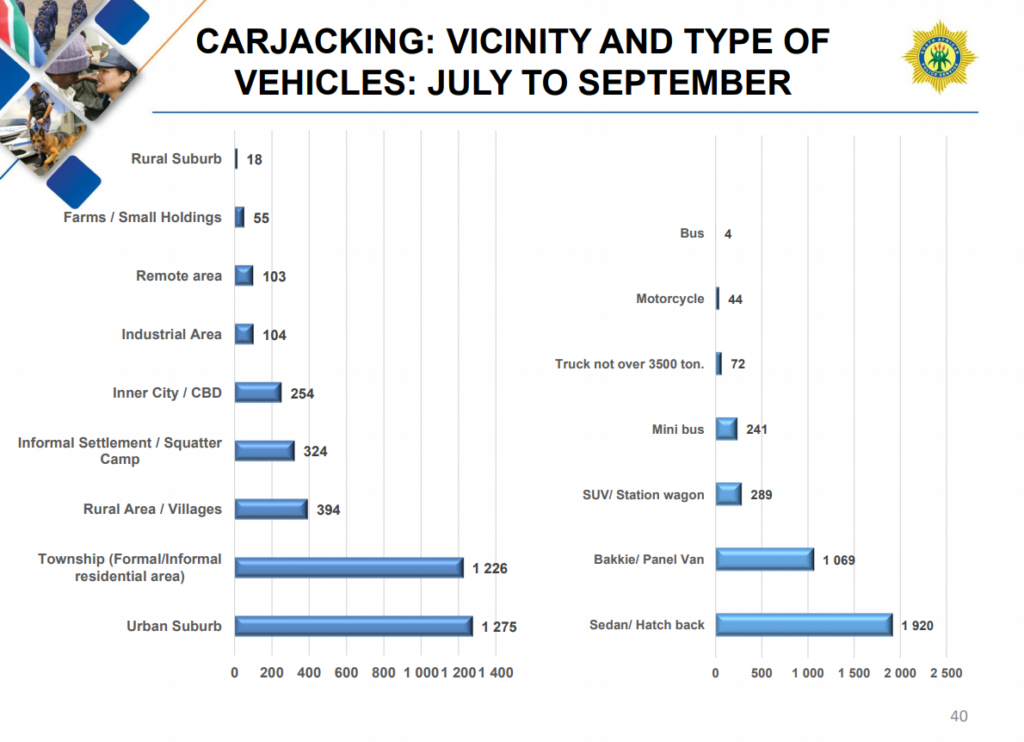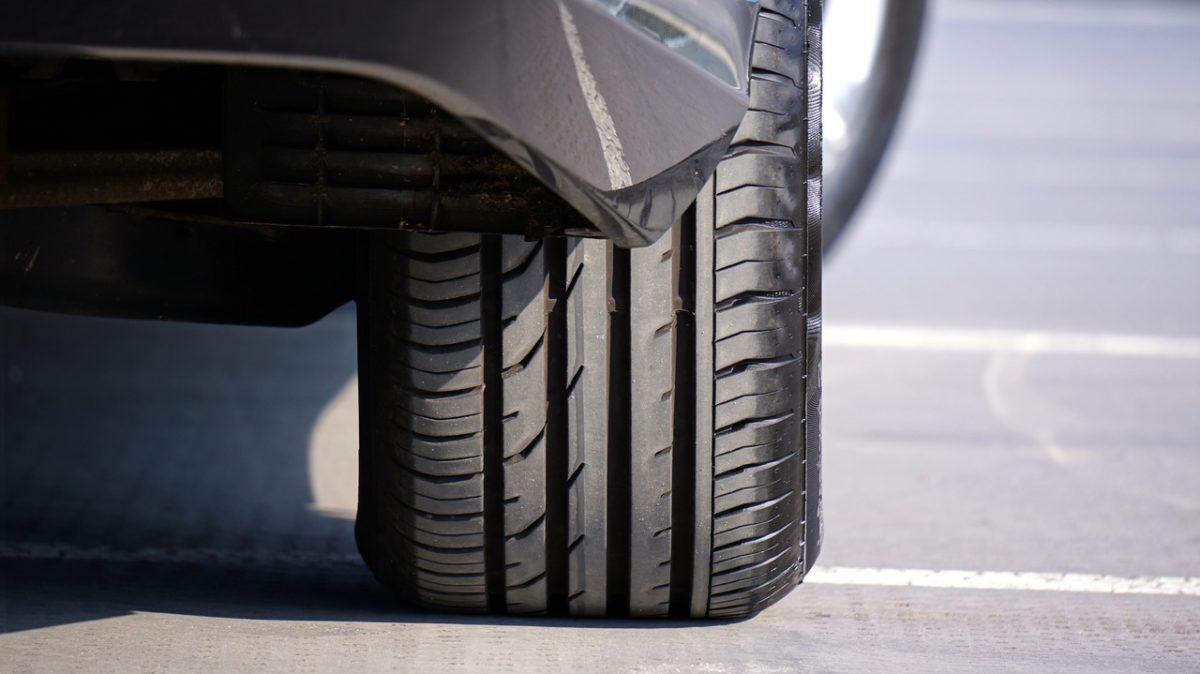The latest on hijackings in South Africa (November 2020)
The South African Police Service has published crime statistics for the period between 1 July and 31 September 2020, showing a decline in hijackings as a result of the coronavirus lockdown.
The country reported a total of 4,803 car-jackings over the period – a decrease of 1.6%. However, the data shows a clear increase in cases as the country continued to ease movement restrictions and moved to a level 1 lockdown.
The statistics are also heavily weighted by a big drop in car-jackings in the North West and Northern Cape (43,7% and 55,6% Y-o-Y respectively), while cases increased in Gauteng and the Free State on an annual basis.
 Image credit: Businesstech.co.za
Image credit: Businesstech.co.za
As with the country’s other major crimes statistics, majority of cases were reported in the most populous areas.
Most carjacking cases were reported in Gauteng (2,435), followed by the Western Cape (838) and KZN (733). Sedans and hatchbacks are the most popular targets, followed by bakkies and SUVs.
Hijackings are unfortunately a prevailing part of our crime story, with over 30,000 hijackings of motor vehicles, including trucks, taking place in a single year”
– bianca de Beer, spokesperson for Dial Direct
Nyanga in the Western Cape reported the most number of car-jackings (180), followed by Khayelitsha (63). Mamelodi East in Gauteng (61) was the area with the most cases reported outside of the Western Cape.
Most of these hijackings take place in suburban areas followed close by townships. The table below highlights the areas which have had the most hijacking cases reported to their respective police stations:
 Image credit: businesstech.co.za
Image credit: businesstech.co.za
With more cars back on the road, hijackers are seizing the opportunity by pouncing on unsuspecting motorists resulting in a significant spike in hijackings, noted insurer Dial Direct.
“Hijackings are unfortunately a prevailing part of our crime story, with over 30,000 hijackings of motor vehicles, including trucks, taking place in a single year,” said Bianca de Beer, spokesperson for Dial Direct.
“Our claims data shows that hijackings have increased by 20% from 2019 to 2020,” she said.
 Image credit: businesstech.co.za
Image credit: businesstech.co.za
Richard Brussow, director of the National Hijacking Prevention Academy (NHPA), has been investigating hijackings for 21 years and recently shared his findings from an in-depth analysis of hijackings that took place between August 2019 and July 2020.
Hijackers prefer spots where vehicles are moving slowly or stationary – ideally spots where there are easy escape routes
– Richard Brussow, director of the National Hijacking Prevention Academy (NHPA)
Some key findings of the report when it comes to hijacking trends showed that although hijackings occur every day of the week, they typically peak on Fridays. More hijackings occur from 12h00 midday, peaking at between 16h00 and 20h00.
Brussow said that hijackers prefer spots where vehicles are moving slowly or stationary – ideally spots where there are easy escape routes – with most hijackings taking place in residential driveways.
“Other hotspots include traffic signs or intersections, the side of the road (when the driver stops to answer the phone, for example), schools, filling stations, parking areas and places where passengers are picked up or dropped off,” he said.
“Pistols and revolvers are mostly used, with a smaller percentage of hijackings involving high calibre guns, knives and even bare hands.”
Source: Businesstech.co.za




